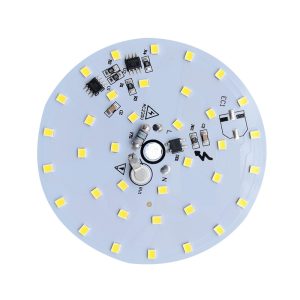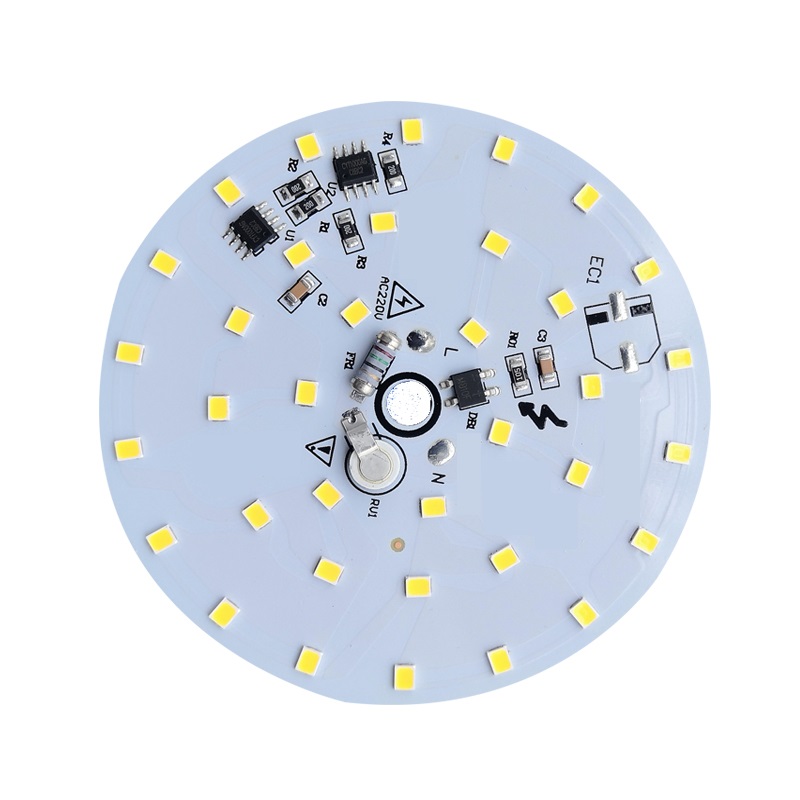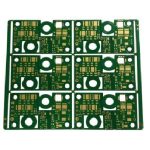Metal Base Copper Clad Laminates (also known as Insulated Metallic Substrates). It is generally by the metal base (aluminum, iron, copper, molybdenum alloys, and other metal plates), insulating layer (epoxy resin, polyimide resin, epoxy glass cloth, etc.) and conductive layer (copper foil, etc.) of the composite plate. It is a special substrate material for manufacturing printed circuit boards.

1. Types
Metal substrate base from its structural division, there are three common. That is, mainly metal substrate, cladding type metal substrate, and metal core substrate.
The metal substrate is a metal plate (aluminum, iron, copper, etc.) for the bottom substrate, . Coated with resin (or resin glass cloth) as an insulating layer and conductive layer (copper foil) composition.
Cladding-type metal substrate is in the metal plate around a layer of glaze, after sintering. -The bottom of the body of the substrate, on which the screen leakage printing, and sintering, is made of conductor circuit graphics.
Metal core substrate, the general core is a metal plate (aluminum, iron, etc.), the surface of the plate is coated with epoxy resin and other organic polymer resins, covered with a conductor foil (some with the addition of direct formation of conductive circuit graphics).
2. The main characteristics of the metal-based copper-clad plate
(1) Excellent heat dissipation performance: metal-based copper-clad laminate has excellent heat dissipation performance, which is the most prominent feature of this type of board. The PCB made of it can prevent the working temperature of the components and substrates loaded in the PCB from rising, and can also rapidly dissipate the heat generated by components such as power amplifier components, high-power components, and power switches of large circuits. In different types of metal substrates, copper is a substrate for the best heat dissipation of metal substrates, but copper and aluminum plates of the same volume than the price copper, high density, are not suitable for the development of substrate materials to lightweight, and therefore not widely used. Only when manufacturing high heat dissipation metal substrate, only a small amount of copper. Aluminum plate is better than iron plate heat dissipation.
(2) good mechanical properties: metal-based copper-clad plate with high mechanical strength and toughness, which is much better than rigid resin-based copper-clad plate and ceramic substrate, and therefore can be realized on a metal substrate for the manufacture of large-area printed circuit boards. Components with large weights can be mounted on these substrates. In addition, the metal substrate also has good flatness and can be hammered, riveted, and other aspects of assembly processing on the substrate. On the PCB made of it, the non-wiring part can also be folded, twisted, and other aspects of mechanical processing.
(3) excellent dimensional stability: for a variety of copper-clad boards there are thermal expansion (dimensional stability) problems, especially in the direction of the board thickness (Z-axis) of the thermal expansion, so that the metallization of the holes, the quality of the line is affected. Iron, aluminum substrate coefficient of linear expansion than the general resin-based substrate is much smaller, closer to the coefficient of linear expansion of copper, which is conducive to ensuring the quality and reliability of printed circuits.
(4) Electromagnetic shielding: To ensure the performance of electronic circuits, electronic products in several components must be prevented from electromagnetic radiation, and interference, metal substrate can act as a shielding plate to play the role of shielding electromagnetic waves.
(5) Electromagnetic properties: Iron-based copper-clad laminate substrate material is a magnetic performance of the iron element alloy (such as silicon steel plate, mild steel, galvanized cold-rolled steel, etc.), using this feature will be applied to tape recorders (VTR), floppy disk drive (FDD), servo motors and other small precision motors. This kind of metal-based copper-clad plate plays the role of both PCB and small motor stator substrate functions.
3. Application
Iron-based copper-clad laminates and silicon steel copper-clad laminates have excellent electrical properties, magnetic conductivity and voltage resistance, and high substrate strength. They are mainly used in brushless DC motors, tape recorders, recording machines, spindle motors, and intelligent drives. Aluminum-based copper-clad laminates have excellent electrical properties, heat dissipation, electromagnetic shielding, high voltage, and bending processing performance, mainly used in automobiles, motorcycles, computers, home appliances, communications electronics, and power electronics. Metal PCB substrate with aluminum-based copper-clad plate market use the largest.
Copper-based copper-clad laminate has the basic performance of aluminum-based copper-clad laminate, and its heat dissipation is better than that of aluminum-based copper-clad laminate, this kind of substrate can carry high current, and it is used for the manufacture of high-power circuits such as power electronics and automotive electronics PCB, but the copper substrate has a high density, high value, and is easy to be oxidized, which restricts its application and makes its usage much lower than that of aluminum-based copper-clad laminate.
Contact OPCBA.COM to inquire about Metallic Substrates PCB.





